It's sunset in Rome, outside the city walls. Golden light filters through umbrella pines and casts its glow on a straight stretch of smooth basalt stones that changed the course of history. This is the Appian Way, the first road built in Rome, where more than 2,000 years ago soldiers set out to conquer distant lands and returned in triumph.
The road is the heart of Rome's Appia Antica Archaeological Park, an expansive green wedge that stretches from the edge of the city's historical centre to the hillside villages of the Castelli Romani. This 4,700-hectare oasis is the second largest urban park in Europe – dotted with aqueducts, nature reserves, archaeological sites, vineyards, pastures and villas owned by such luminaries as designer Valentino and actress Gina Lollobrigida.
Less than 3km from the Colosseum's crowds, the parco gives travellers a place to slow down and leisurely experience the Roman countryside, complete with birdsong and sightings of shepherds leading their flocks. The scattering of ruins adds a certain memento mori that enchanted painters and poets of the Grand Tour, as you feel the circle of life standing on this old road: soft breeze carrying the scent of fresh grass, crumbling stones carrying stories from the past.
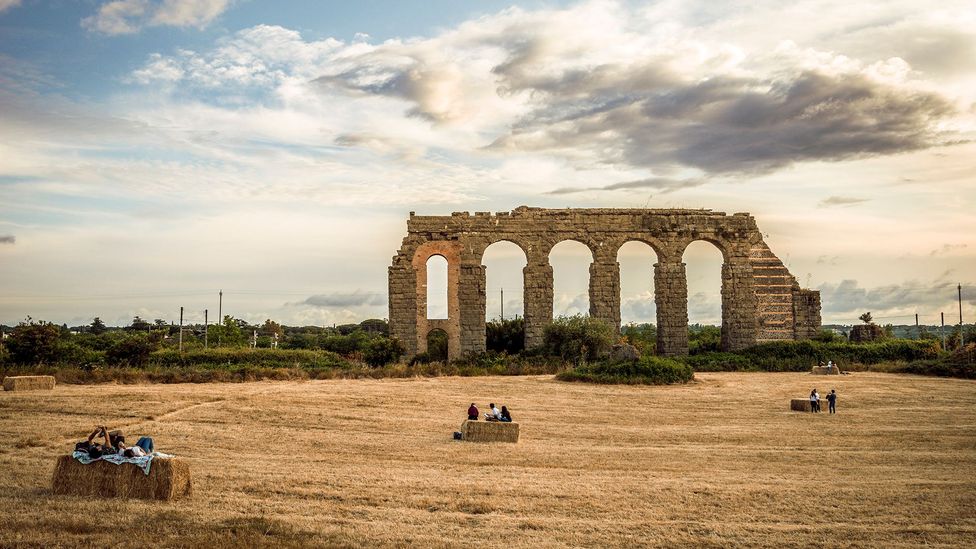
The Park of the Aqueducts, part of Appia Antica, is just a few kilometers from the crowds of the Colosseum (Credit: Stefano Castellani)
As this is Italy, good food must complete the idyllic scene. Enter Paolo Magnanimi, of the Appian Way's Hostaria Antica Roma. The restaurant is located within sight of the park's iconic Mausoleum of Cecilia Metella and fronted by a flower and vegetable garden tended by Magnanimi's father, Massimo. Inside, the menu lists dishes that can't be found at any other restaurant in the city, or perhaps in the world. Behind these creations is Magnanimi, a cook passionate about creating and serving meals that are deeply rooted in this park's history, from the days of ancient Rome.
For most, ancient Roman food doesn't sound appealing. What first comes to mind are freakish scenes like Trimalchio's banquet in the 1st-Century AD story Satyricon, where a nouveau riche host throws an ostentatious feast that includes such "delicacies" as bull's testicles, sow's udders and a hare decorated with wings to resemble Pegasus.
You may also be interested in:
• Has Rome declared an artichoke war?
• Italy's beloved 3-ingredient pasta dish
• The world's oldest known recipes decoded
But Magnanimi keeps it real, recreating delicious dishes that regular Romans ate, not the exotic fare that was reserved for the super elite. A chef and historian who has spent more than 25 years studying ancient recipes, Magnanimi says Romans were nature lovers and sensual pleasure seekers who greatly appreciated good food, though over-indulging was very "un-Roman". Grains, legumes, vegetables, eggs and cheeses were the base of the diet, with fruit and honey for sweetness. Meat (mostly pork), and fish were used sparingly, and as the empire expanded beginning in the 3rd Century BC, Romans welcomed new flavours – be it pepper from India or lemons from Persia. Garum, similar to an Asian fish sauce, was liberally used to add a rich umami flavour to Roman dishes. All this was enjoyed with honeyed wine at dinners called convivium – gatherings to celebrate life and the seasons.
Magnanimi embodies this spirit of celebration, whether telling stories to guests or stirring up something delicious in his kitchen. Now 54, he laughs telling me how as a younger man he had a hard time convincing his father that customers would like his revivals of ancient dishes.
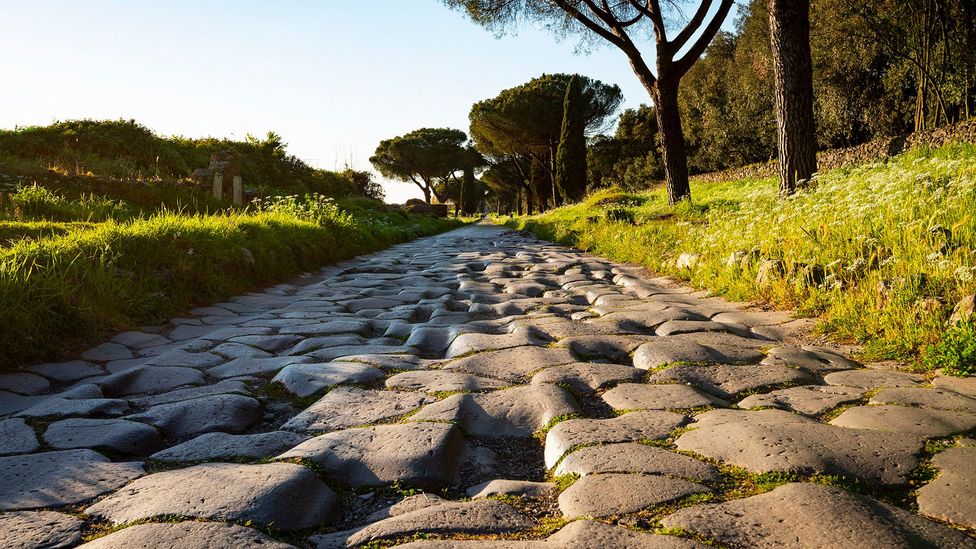
During Italy's Covid-19 lockdown, Magnanimi took walks along the Appian Way, spending time among shepherds, picnickers and joggers (Credit: Stefano Castellani)
"I started working in the Hostaria when I was 14 and took a break to have my 'Jack Kerouac' years in the USA," he said. "When I came back, I had a new appreciation for the great history of Rome, and I was hungry to learn more about it." Magnanimi's inspiration grew when a friend gave him Dinner with Lucullo, a book full of stories and recipes from the days of ancient Rome. Its title character was a 1st-Century BC military man who was so famous for his banquets that Romans still praise a good dinner by saying, "that was a meal worthy of Lucullo."
Magnanimi started testing recipes and had his first success with pullum oxizomum, a chicken entree. It is made with leeks and colatura di alici di Cetara, a condiment from the Amalfi Coast made from fermented anchovies that is the perfect substitute for garum. Some Japanese diners especially enjoyed it, and that led to him being featured on documentaries in Japan. "My Roman groupies came after that; they were harder to convince to try something new," Magnanimi said. "And then pollo oxizomum was praised in The New York Times, so it is still one of our most popular dishes."
These days, the Hostaria's menu features the Eternal City standards (such as pasta amatriciana and carbonara), along with the ancient Roman dishes that have brought Magnanimi international attention and made his once-sceptical father proud.
I first met Magnanimi in 2008 when I landed in the Hostaria and, on the recommendation of a foodie friend, ordered patina cotidiana, a tomato-less predecessor to lasagne. The original recipe used lagana, a flat bread, which was layered with meats, fish and cheeses. Magnanimi's was simpler, filled with ground pork, fennel and pecorino cheese.
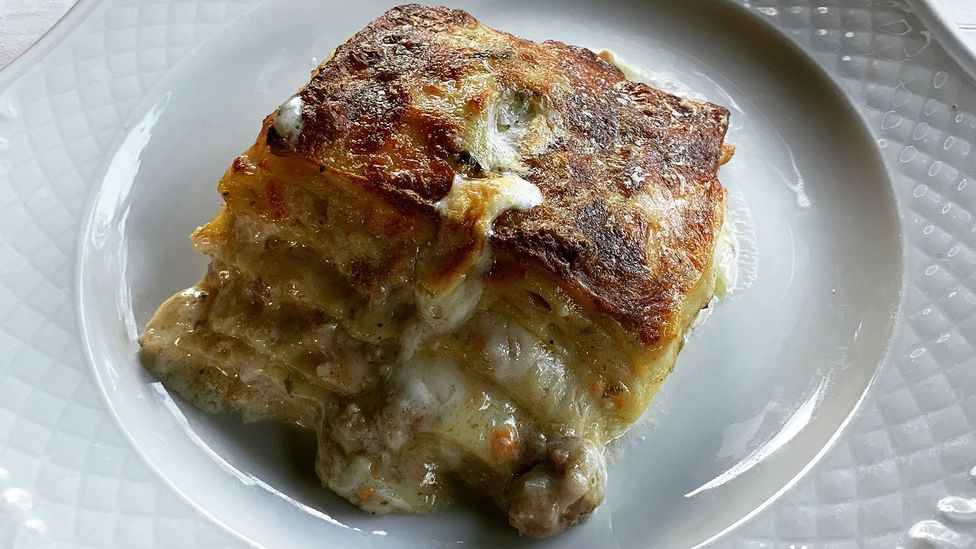
Patina Cotidiana, a tomato-less predecessor to lasagne, is one of the signature dishes at Hostaria Antica Roma (Credit: Paolo Magnanimi)
To recreate this 2,000-year-old dish, Magnanimi started with a recipe from the 1st-Century AD Roman cookbook De Re Coquinaria, the only surviving recipe book from ancient Rome, which is attributed to Apicius, a wealthy gourmand once described by Pliny the Elder as "the most gluttonous gorger of all spendthrifts". Since the ancient recipes didn't use quantities or details for preparation, he then consulted noted Italian archaeologist Eugenia Salza Prina Ricotti to recreate the dishes by estimating their measurements with ingredients that were true to the era.
"I couldn't put tomato in it," Magnanimi said, "because tomatoes didn't come to Italy until the 1500s, when Cortes brought them back from the Americas." The patina cotidiana, which means "daily dish" in Latin, is now a restaurant signature.
My first taste kept me returning to try more flavours of ancient Rome, including sweets such as tiropatina, a custard that's spiced with pepper, which Romans believed to be an aphrodisiac. Magnanimi told me his most recent creation is la cassata di Oplontis, inspired by a fresco found in a villa near Pompeii. The rich cake made with almond flour, ricotta, candied fruit and honey sells out every night.
"My cheese, I make with the mortar and pestle, exactly like a recipe from Virgil, from the 1st Century AD," Magnanimi said. This is moretum, a cheese spread inspired by Virgil's poem about a farmworker preparing his humble lunch, grinding together coriander, celery seed, garlic and pecorino. It can be slathered on libum, a round bread that was sacred to the Romans.
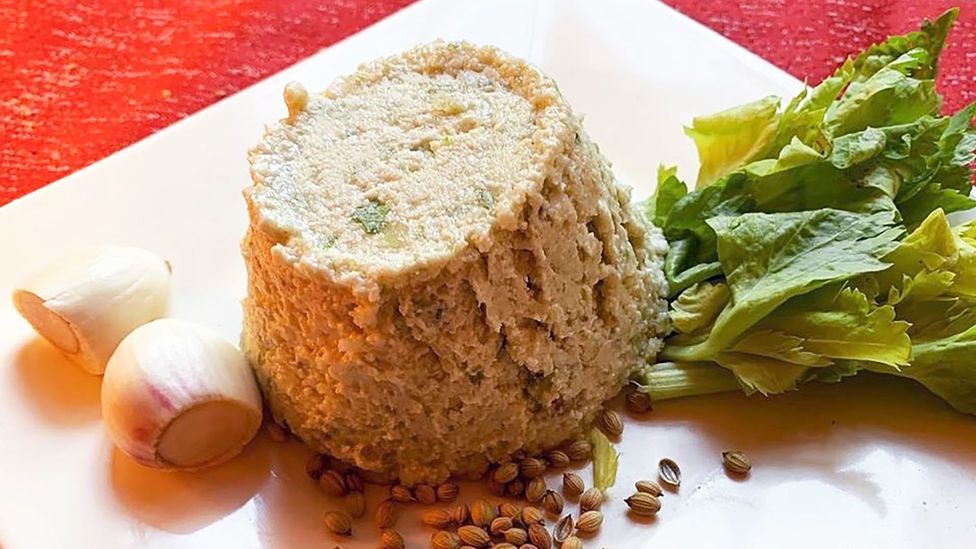
Magnanimi serves moretum, a cheese spread inspired a Virgil poem, as well as bread that was sacred to early Romans (Credit: Paolo Magnanimi)
I'd seen black carbonised libum in a Pompeii Museum, where a guide told me that its crumbs were placed on altars as an offering to household gods – a precursor to the Christian eucharist. Magnanimi shapes his libum in light, puffy rolls and stuffs them with ricotta sourced from the sheep farm up the road.
Magnanimi missed engaging with guests during Italy's Covid-19 lockdown. With all the free time, he took lots of walks through the surrounding Appian Way, where leafy footpaths and bike lanes served as an outdoor refuge for Italians enduring some of Europe's strictest lockdown measures.
"I spent a long morning with a shepherd, some days I'd see so many Romans coming here to jog because they couldn't go to the gym, and on weekends, there were families having picnics near the aqueducts, probably coming here for the first time. I could tell we all were feeling a bigger appreciation for where we live, for Rome."
"Paolo is an important part of this place. He keeps it lively," said Simone Quilici, the director of the Appia Antica Archaeological Park. Quilici is continuing a mission that began in the early 19th Century when the idea of preserving this area began to take hold. That's when archaeologist and architect Luigi Canina decided to plant the now archetypal umbrella pines along the Appian Way.
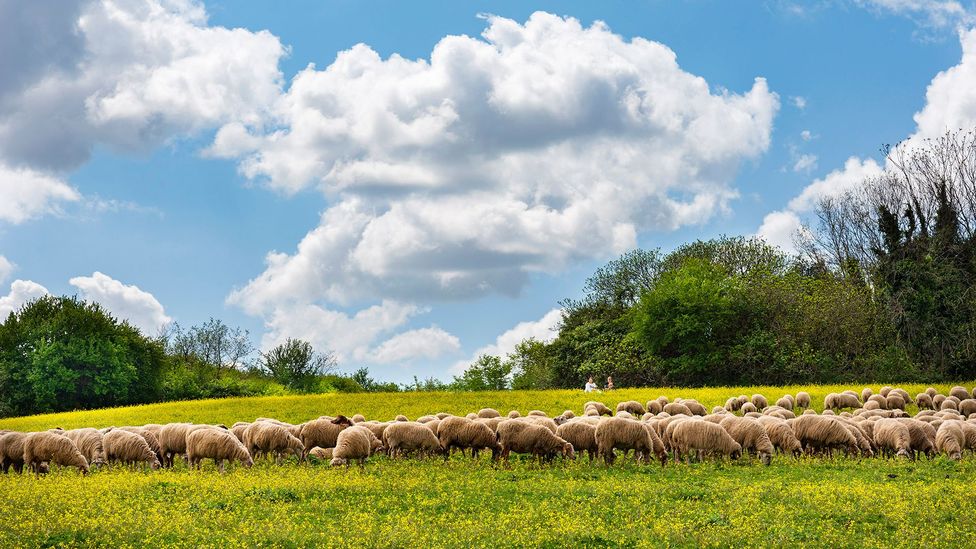
Appia Antica is the second largest urban park in Europe, and is home to archaeological sites, grazing pastures and nature reserves (Credit: Stefano Castellani)
Sadly, the park plans were never fulfilled and by the 20th Century, with uncontrolled traffic and the turbulence of the World War years, there was danger that this precious section of the Appian Way would be destroyed. The area became vandalised and riddled with criminal activity. Finally in 1988, largely thanks to decades of protests, the area was officially designated a park.
"I remember coming here as a little girl," Eleonora Fanelli, a Roman archaeologist and tour guide told me. "I couldn't believe this was in my city, a place out of a fairy tale where I could imagine a prince on horseback galloping on the path." Now, Fanelli loves to take visitors here. "Even if it's raining, they want to get out and walk on the road, step on the stones that have chariot wheel marks on them, from 312BC!" She loves to tell the story of the Roman censor, Appius Claudius Caecus, who nearly bankrupted the Roman treasury to have this road built. The legend goes that though he went blind, he still maintained quality control by walking barefoot on the road to ensure that the stones were smoothly laid. The Appian Way eventually extended 563km south to Brindisi on the Adriatic coast, and was the key to the creation of the Roman Empire.
Magnanimi has lived in the park for two decades and has high praise for Quilici's leadership. "Since he began in 2017, he's made the park so much better for Romans and for tourists. New things have opened, like the 2nd-Century AD thermal baths of Capo di Bove, where there are beautiful mosaics and a garden." There is also a new ItinerAppia App, where visitors can scan a QR code and learn about each monument.
"I feel so lucky to live here and to welcome travellers to experience Rome, La Grande Bellezza, for real!," Magnanimi said. "Here they can step back thousands of years on these stones and know how good it tasted."
---
Join more than three million BBC Travel fans by liking us on Facebook, or follow us on Twitter and Instagram.
If you liked this story, sign up for the weekly bbc.com features newsletter called "The Essential List". A handpicked selection of stories from BBC Future, Culture, Worklife and Travel, delivered to your inbox every Friday.
"eat" - Google News
July 20, 2021 at 05:43AM
https://ift.tt/36NIS9u
What did the ancient Romans eat? - BBC News
"eat" - Google News
https://ift.tt/33WjFpI
https://ift.tt/2VWmZ3q
Bagikan Berita Ini














0 Response to "What did the ancient Romans eat? - BBC News"
Post a Comment